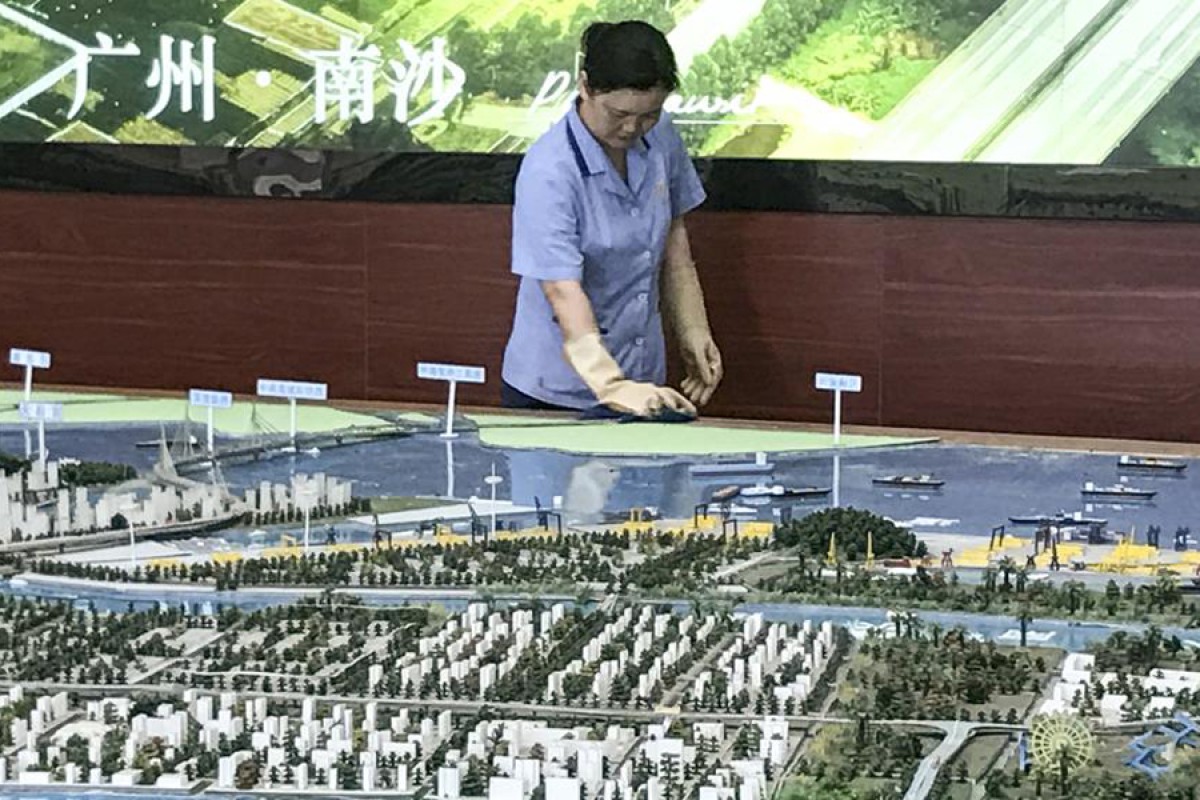
Hong Kong needs to look at the bigger picture and catch up with global trends
The city must first ensure the well-being of its residents before hoping to make an impact internationally
 A model of what Nansha, in southern Guangzhou, would look like under Beijing’s Greater Bay Area integration scheme for the Pearl River Delta.
A model of what Nansha, in southern Guangzhou, would look like under Beijing’s Greater Bay Area integration scheme for the Pearl River Delta. As Carrie Lam Cheng Yuet-ngor prepares to assume leadership of Hong Kong, the spotlight has fallen on the city’s former chief secretary, the pan-democrats, and Beijing.
However, if we really want to prosper under Lam, we need to think of the bigger picture: Hong Kong’s future as a conduit for organisations hoping to tap into the Chinese market, and the livelihood of Hong Kong people.
Most notably, Hong Kong needs to catch up with global trends – and fast. The city’s reputation as a shopping and tourism destination is under threat due to its inability to adapt to changing trends. We need more than Disneyland and some glamorous shops to persuade tourists to visit Hong Kong.
This failure to adapt was highlighted when Alibaba Group – which owns the South China Morning Post – decided to list its shares in New York. As a result, Hong Kong lost out on the e-commerce giant’s US$25 billion initial public offering. It was a costly blow for the Hong Kong Stock Exchange, financially and in terms of market development.
To cement its reputation as a global innovation hub, the city needs to be fully involved in the Greater Bay Area project, announced by Premier Li Keqiang earlier this year. It is an enticing opportunity to collaborate with places like Guangdong and Macau.
With China increasingly engaging with the outside world, questions are being raised as to how long Hong Kong can play its role as “middleman”. What’s more, Shenzhen seems to have become the Chinese version of Silicon Valley.
Therefore, if Hong Kong hopes to stay relevant, we must follow Lam’s plan and play a leading role in the Greater Bay Area initiative.
Of course, Hong Kong first needs to solve its own social problems. These include the housing shortage, welfare for the poor and the elderly, and health and education issues. We must ensure the well-being of our residents before hoping to make an impact internationally. How Lam plans to do this is unclear, but her commitment to healing Hong Kong’s wounds is refreshing, and a sign that there’s still hope, despite the “small-circle” election that takes place every five years.
Admittedly, if Lam wants to bridge the growing social and political chasm in Hong Kong, she can’t go it alone. Beijing must show more compassion and help to dampen tensions, which is unlikely if they continue to adopt a hardline stance.
Let’s not forget – the one country, two systems principle will continue for another 30 years, and if we are to prosper in the next three decades, political differences must be set aside in the pursuit of common ground. Let’s hope that both Lam and the pan-democrats can keep this bigger picture in mind, and focus on Hong Kong’s livelihood and welfare.
The initial signs are positive, but five years is a long time.